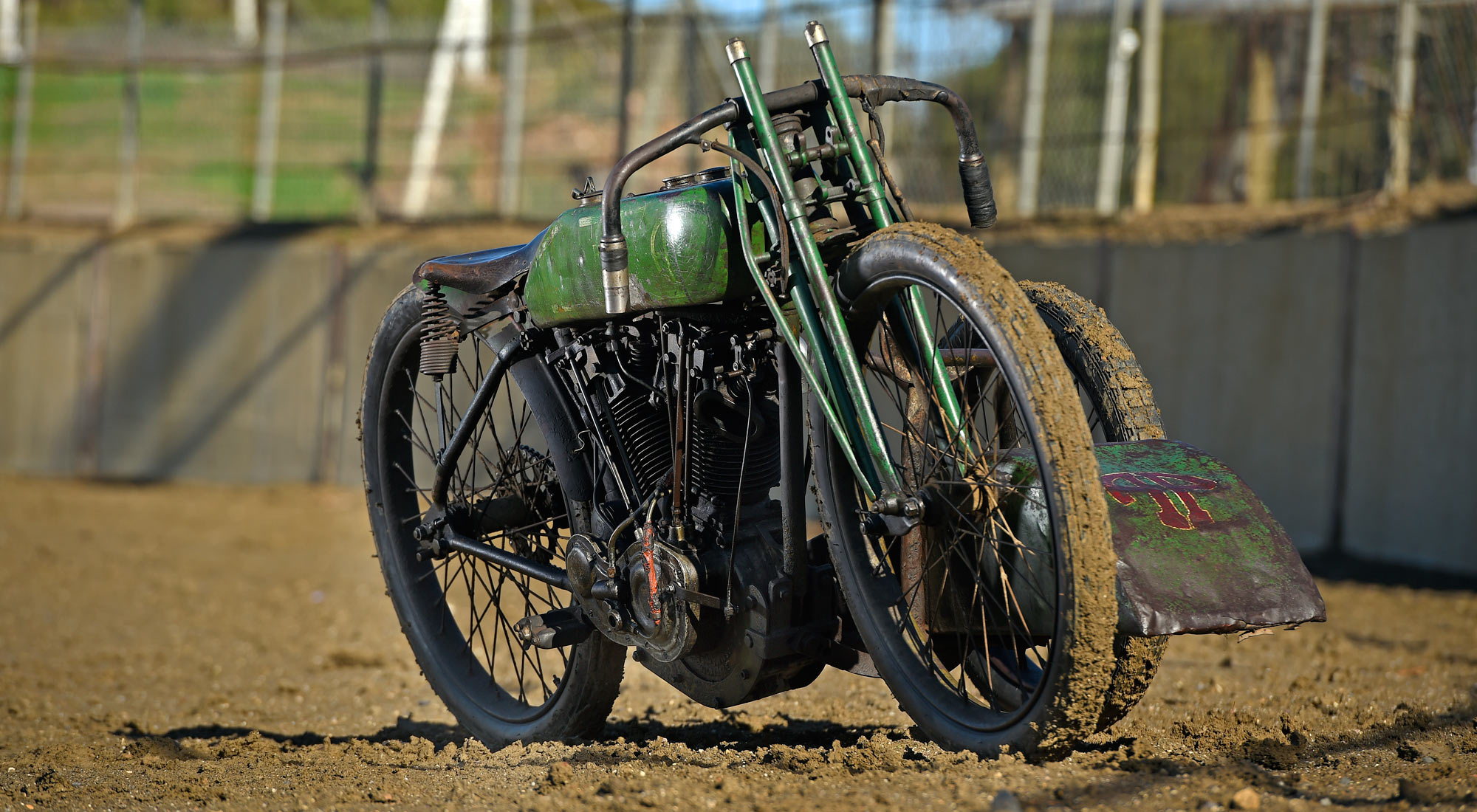1928 Harley-Davidson FHAD
Hillclimbing was a popular sport in the 1920’s and like every other form of competition Harley-Davidson built a machine specifically for it. This 1928 FHAD is a factory built hillclimber based on the 61-in. Two-Cam racing motor, designed to compete with similar motorcycles from Excelsior and Indian. The chained rear tyre is typical for hillclimbers of the era – knobby tyres were still a generation away.

Built on a “Keystone” frame, where the engine is held in by plates for rigidity, the FHAD was a single-purpose machine. Its gas tank held only ¾ gallon, its footboards were sloped forward for frontal weight distribution, its chains and sprockets were quite narrow, its fork was raked for uphill acceleration and only one gear (high), and only one brake (rear) were available.





Enjoy the ride…























































































































